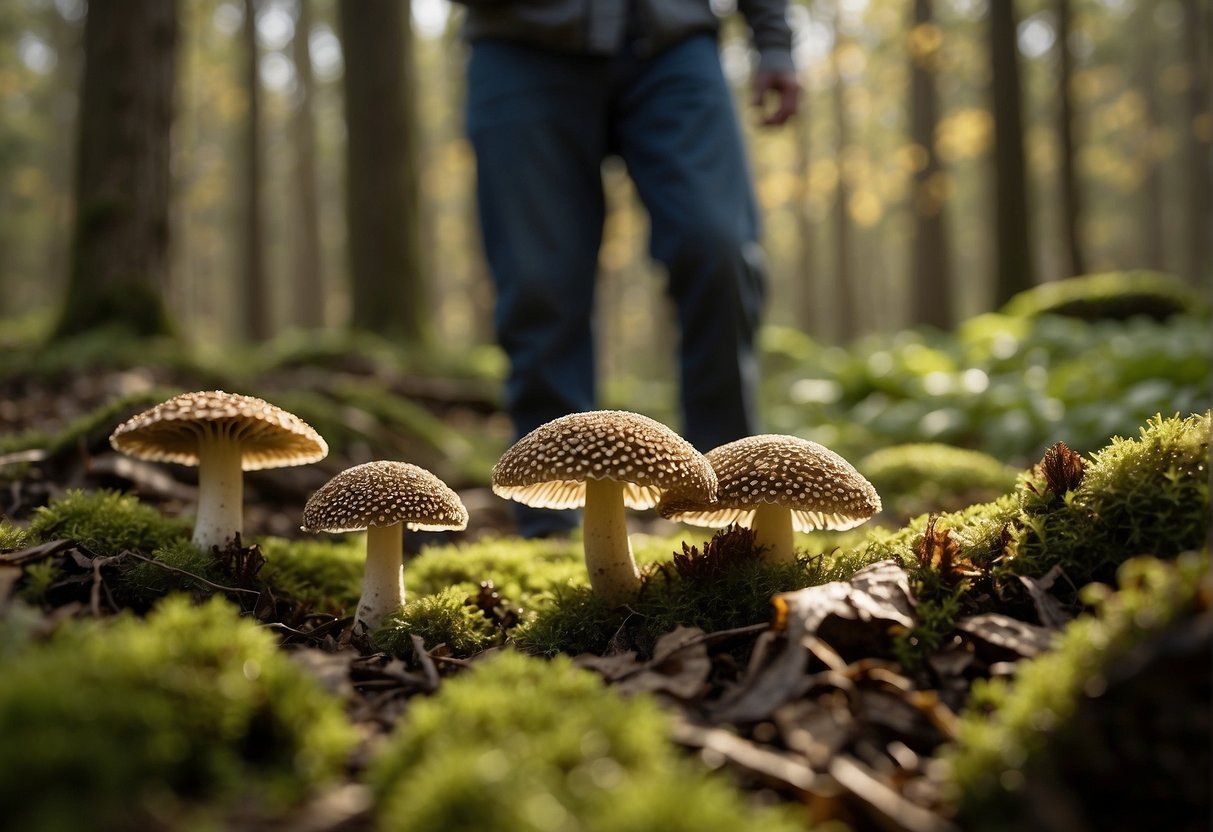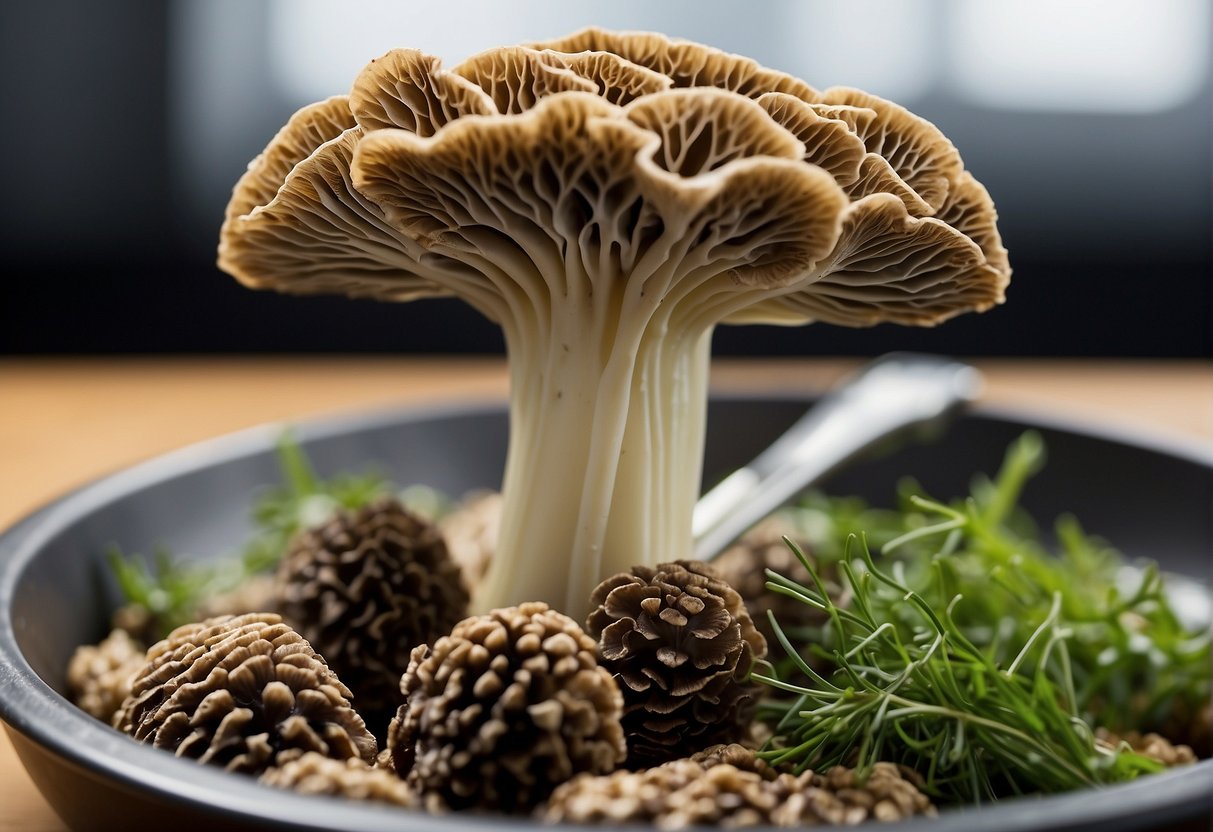Morel mushroom foraging is an enticing pursuit that combines the thrill of the hunt with the joy of discovering one of nature’s most cherished delicacies. These elusive fungi are highly sought after for their unique flavor and texture, which make them a prized ingredient in gourmet kitchens. Unlike typical mushrooms found in grocery stores, morels are not cultivated but are foraged in the wild, making each find a rewarding experience. They have a distinctive honeycomb appearance and can range in color from creamy beige to dark brown.

As a forager, your adventure typically begins in the spring, when warmer soil temperatures and certain environmental conditions signal the start of the morel season. Knowledge of the morel’s habitat is essential; they thrive in mixed forests, often near the base of dead or dying trees, especially elms, ash, and apple. To successfully forage morels, you’ll need to employ specific techniques and strategies while respecting not only legal regulations and sustainability practices but also your own safety. Proper identification to avoid toxic look-alikes, understanding the lifecycle of morels, and knowing the best practices for harvesting are all integral to a successful and ethical foraging experience.
Key Takeaways
- Morel foraging provides a rewarding experience for outdoor enthusiasts with its unique challenges and gourmet rewards.
- Successful foragers need to recognize the preferred habitats and growth patterns of morels.
- Ethical and safe foraging practices ensure sustainability and personal well-being during the hunting process.
Understanding Morel Mushrooms
Before venturing out into the woods, know that morel mushrooms are highly sought after for their unique flavor and distinctive look. They require a keen eye to identify correctly, and they thrive in specific habitats, appearing during certain seasons.
Species and Identification
Morels are part of the Morchella genus, and among them, you’ll mainly find Morchella esculenta (yellow morel) and Morchella elata (black morel). To correctly identify a true morel, look for a honeycomb-like cap that’s ridged and pitted. The cap should be attached directly to the stem, which is usually white to pale in color. Morel mushrooms are completely hollow from the cap to the stem, a key feature distinguishing them from false morels. False morels often have a brain-like or wrinkled appearance rather than the pitted look of true morels.
-
True Morel Features
- Honeycomb-patterned cap.
- The cap attached to the stem.
- Hollow from cap to stem.
-
False Morel Features
- Irregular, wrinkled cap.
- The cap may not be attached to the stem.
- Usually not hollow.
Habitat and Symbiosis
Morels have a symbiotic relationship with certain trees, forming a mycorrhizal relationship where both the fungus and tree benefit. You’ll often find morels in woodland areas, particularly under elm, ash, and apple trees. Morels also appear in forested areas that have recently experienced a burn, as they are saprotrophic, utilizing the dead wood as a nutrient source.
Common Trees Associated with Morels:
- Elm
- Ash
- Apple
- Burn sites
Seasonality and Climate
Your chance of finding morels increases from early spring to mid-summer, depending on your geographic location. Morels flourish in moist soil and after temperature shifts that follow a good rain. These mushrooms thrive in temperatures between 60°F and 70°F, with nights that are not too cold, which is why spring, with its fluctuating temperatures and rainfall, tends to be the best time to forage for them.
Best Conditions for Foraging Morels:
- Early spring through mid-summer.
- Moist soil conditions.
- Temperatures between 60°F and 70°F.
Foraging Techniques and Best Practices
Embark on your morel mushroom foraging journey with well-researched techniques and best practices that maximize your chances of a successful harvest. Understand the nuances of preparation, effective searching methods, and responsible harvesting to ensure that your forage yields a healthy and satisfying bounty.
Preparation
Before you head out to forage morel mushrooms, make sure you’re adequately prepared. Check daytime temperatures; morels tend to pop up in the spring when the soil hits the mid-50s Fahrenheit. Equip yourself with a field guide to accurately identify morel mushrooms and differentiate them from look-alikes. Dress appropriately for the terrain and weather, wearing sturdy shoes and clothing layers.
- Field Guide: Essential for accurate identification.
- Clothing: Dress for the weather and terrain.
Searching
The search for morels requires that you are familiar with their preferred environment. Morels have a fondness for moist, sandy soil and often associate with certain trees such as elms, aspens, and oaks. Timing is crucial; forage after rains when the soil is moist and warm. Keep a keen eye for the distinctive honeycomb-like cap of morels, which can camouflage well with their surroundings.
- Look for Trees: Elm, aspen, and oak.
- Best Times: After rains with warm, moist soil conditions.
Harvesting
When you spot a morel, use a knife to carefully cut the stem without disturbing the mycelium beneath the soil. This practice encourages regrowth. Store your finds in a mesh bag, which allows spores to disperse and potentially seed new areas as you walk. Remember, fresh morels are delicious when sautéed, but they require thorough cleaning and cooking before consumption.era
- Harvesting Tool: Use a knife for cutting stems.
- Storage: Carry a mesh bag for spore dispersal.
Safety and Ethics of Morel Foraging
In the pursuit of morel mushrooms, your awareness of both safety and ethical considerations is crucial. These ensure not only your protection against potential hazards but also the preservation of the ecosystems where morels thrive.
Identifying Toxic Look-Alikes
When foraging for morels, it’s vital to distinguish them from toxic look-alikes. False morels (like Gyromitra species) may appear similar but consuming them can be dangerous. Here’s how to ensure you’ve got the real deal:
- True morels are completely hollow when sliced from top to bottom.
- They have a honeycomb-like appearance on the cap, which attaches directly to the stem without any noticeable seam.
Familiarize yourself with local varieties and study clear images or go with an experienced forager to avoid these risky mistakes.
Environmental Responsibilities
Your environmental responsibilities while foraging extend beyond merely enjoying the outdoors. Here’s how to forage with respect:
- Seek permissions if you’re entering private land and always adhere to local regulations to remain on the right side of the law.
- Practice responsible practices by only taking what you need and leaving enough so that the mushrooms can continue to reproduce.
Avoiding sensitive areas or those that are overpicked helps protect the habitat and ensures the future of morel foraging for everyone.
After the Hunt: Handling and Cooking

After successfully foraging morel mushrooms, proper cleaning and storage is crucial for preserving their quality, and knowing the right cooking methods brings out their distinctive flavor.
Cleaning and Storage
To ensure your morels are free from dirt and debris, follow these steps carefully. Begin by gently shaking them in a mesh bag to dislodge any loose soil. Rinse the mushrooms under cool running water, but don’t soak them, as they can become waterlogged. If needed, use a soft brush to remove stubborn dirt.
For storage, morels should be kept in a container that allows airflow, like paper bags, to maintain their freshness. Avoid airtight containers as they can cause condensation and spoilage. If you wish to keep them for longer periods, consider slicing the morels in half and using a dehydrator to dry them. Set the dehydrator to 110 degrees and run it for 8-10 hours. Once dehydrated, store the morels in airtight containers or freeze them in jars for up to a year.
Cooking Methods
When you’re ready to enjoy your foraged treasure, rehydrate dried morels by soaking them in a bowl of water for 20 minutes. Fresh morels are best enjoyed sautéed in butter over medium heat until they’re golden brown which maximizes their earthy taste. There are numerous ways to cook morel mushrooms: they can be added to creamy sauces, used as stuffing, or even breaded and fried for a crispy treat. The key is to cook morels fully, as all wild mushrooms should be cooked thoroughly before consumption.


